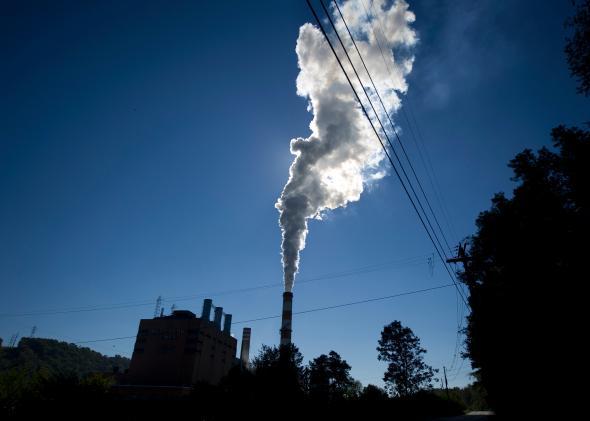Just like that, we’re already halfway to our new goal of reducing global warming pollution from power plants.
On Monday morning, President Obama announced a new target for carbon dioxide emissions from existing power plants: a 30 percent reduction by 2030. The action is as significant as (and possibly greater than) Obama’s previous steps to significantly upgrade fuel efficiency from cars and trucks, and may help deliver a fatal blow to the coal industry.
But by choosing a baseline year of 2005 for the target 30 percent reduction, the administration lets industry off relatively easy. As of 2011, the United States had already achieved a 9 percent reduction in economy-wide CO2 emissions since 2005, thanks in large part to the boom in natural gas. Carbon from power plants is down 16 percent, according to the draft EPA rule text. States will get to factor in those gains to their 2030 targets. What’s more, much of the coal that would have been burned domestically since then is just getting shipped overseas. U.S. coal exports have nearly tripled since 2006, adding to the heat-trapping pollution that accelerates global warming, even though domestic numbers show a decline.
For the first time, states will be held to the equivalent of a “miles per gallon” standard for their power plants, using the Clean Air Act as a legal basis. Since the country’s aging fleet of coal-fired power plants accounts for about three-quarters of carbon dioxide emissions from the country’s electricity sector while producing only 39 percent of the energy, they’ll be the ones most affected by the proposed rule. As an added bonus, each state will have flexibility in how it meets its goal, and will be able to make separate investments in renewable energy, fuel switching/retrofitting, or energy efficiency to ensure the reductions are met using the most cost-effective measures available. Obama is setting state regulators up for a layup.
Here’s the catch: America’s already on track to exceed Obama’s target handily. In fact, 13 states (plus D.C.) already have. From the Washington Post:
Meeting the EPA targets might not be difficult for states that have cut emissions in the electricity sector or that have been meeting their own renewable energy standards. Since the EPA proposed a baseline year of 2005, 13 states and the District have cut carbon emissions by about 30 percent or more, according to a Sierra Club compilation of Energy Information Administration data.
The 50 dirtiest coal plants in the U.S.—just 1 percent of the nation’s electricity-generating fleet—account for 12 percent of the country’s carbon emissions. Not only that, but there’s gobs of mercury, air pollution, mountaintop removal, and many other forms of nastiness spewing from the supply chain and smokestacks of coal-fired power plants. They’ve got to go.
But to prevent the worst of global warming, we’ll have to do much more. For U.S. climate policy to be effective, today’s action has got to be just the tip of the (melting) iceberg. It’s the low-hanging fruit that hasn’t been picked yet. As good as this move is, it’s long overdue. It’s not enough to stop and claim victory here. From ThinkProgress:
To do its part in keeping global warming under two degrees Celsius, the United States will need to get its carbon emissions down 25 to 40 percent below 1990′s levels by 2020. And simply eliminating the carbon pollution produced by those 50 plants—by either replacing them with renewable sources or eliminating demand through improved energy efficiency—could bring those emissions down to 11 percent below 1990 levels. A major piece of the goal.
The U.S. has actually increased its economy-wide emissions by 9 percent since 1990. Translating the 2005 baseline to a 1990 baseline (the level most other countries use) would have made a major difference, converting Obama’s economy-wide target of a 17 percent reduction by 2020 to just a 3.5 percent cut. Because of the accounting trick, the United States will be able to emit an additional 760 million tons of CO2 per year in 2020, or about as much as Germany currently emits.
Here’s a look at the difference a 1990 vs. a 2005 baseline makes in the 12 biggest carbon emitters in the world (plus the European Union):

Illustration by James Emmerman.
Monday’s announcement figures to be the policy centerpiece of the rest of Obama’s presidency, and a challenge to the rapidly growing economies China and India (the world’s No. 1 and No. 3 carbon emitters, respectively) on global warming pollution, favorably positioning the United States for next year’s climate talks in Paris.
The plan to limit carbon emissions from the dirtiest U.S. power plants is a major victory. It’s just not quite the game changer it could have been.
